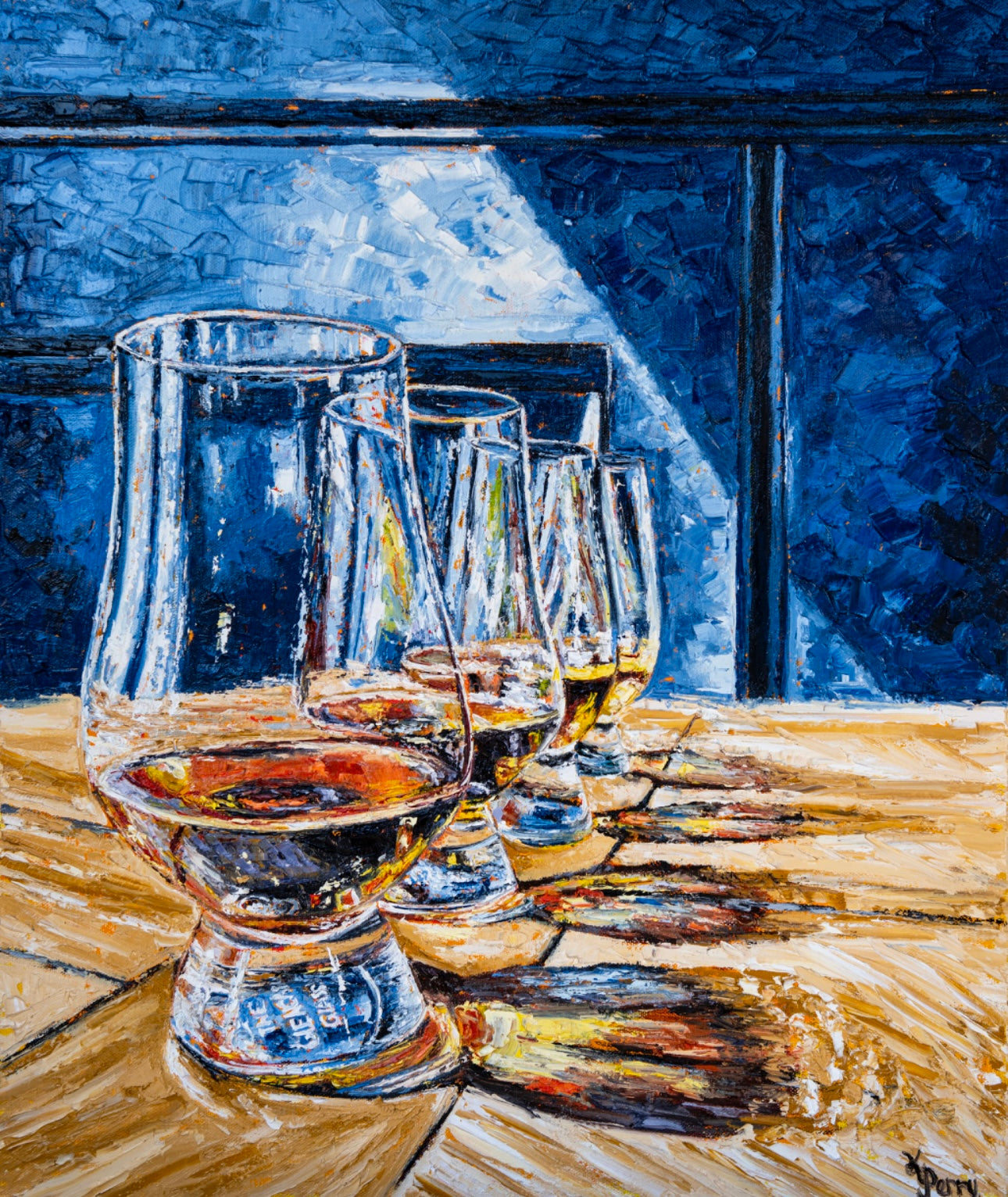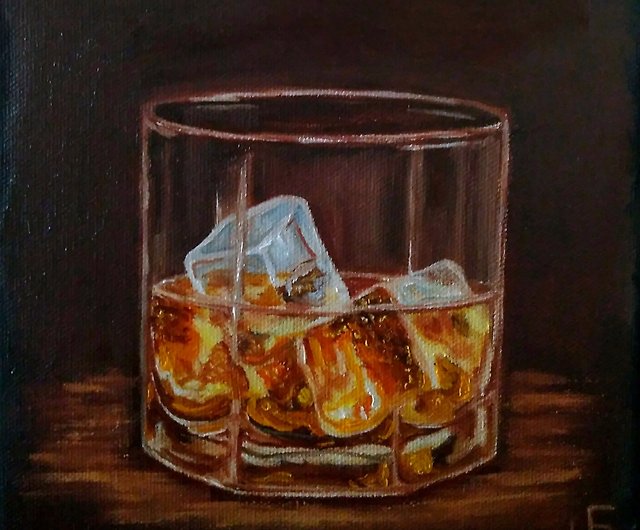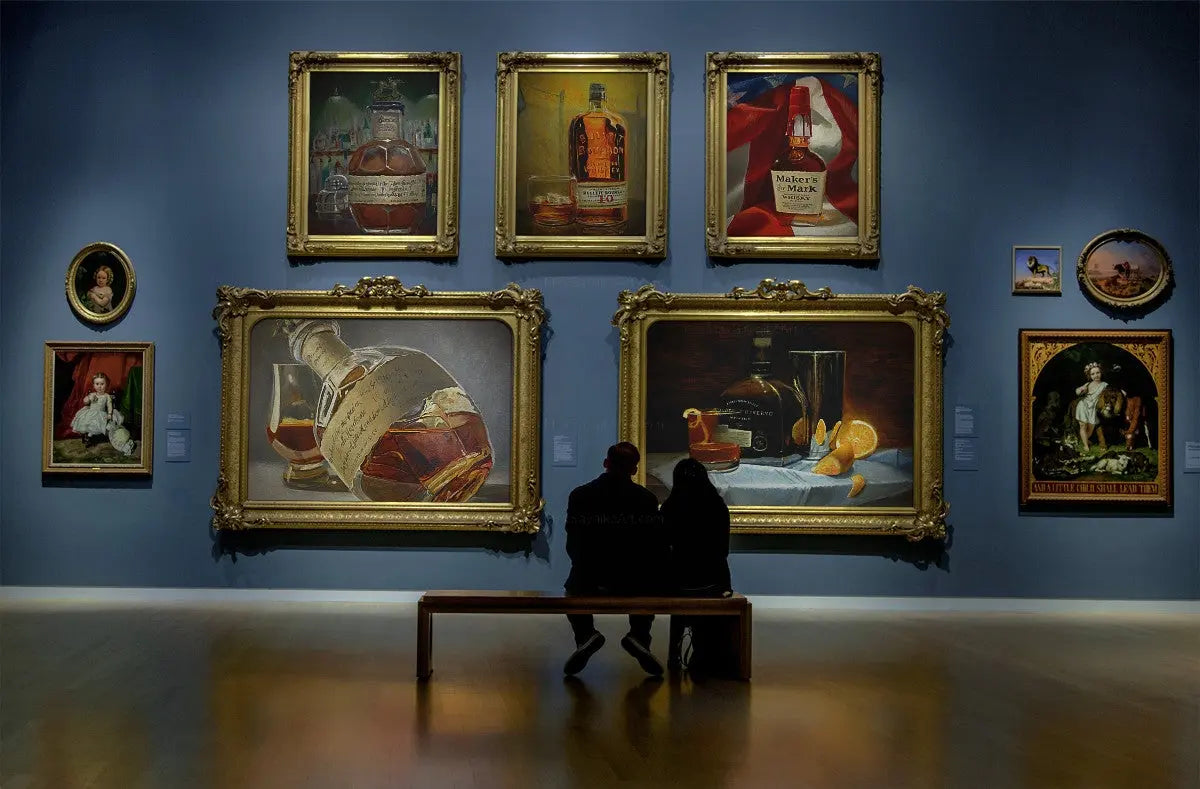Whiskey Art: Catching the Significance of Distillation in Every Brushstroke
Whiskey Art: Catching the Significance of Distillation in Every Brushstroke
Blog Article
The Relevance of Whiskey Art in Celebrating Heritage and Craftsmanship in the Beverage Industry
The elaborate partnership in between bourbon art and the event of heritage and workmanship within the drink sector can not be overstated. Through thoughtfully designed tags and containers, scotch brand names envelop their historic roots and the artisanal skills that define their production approaches.
The Historic Roots of Whiskey
At the heart of scotch's allure exists a rich tapestry of historical roots that map back to old civilizations. The beginnings of bourbon can be connected to the distillation methods of the Sumerians and Babylonians around 2000 BCE, where early kinds of fermented grain beverages started to emerge. It was in the Middle Ages that the art of purification developed considerably, especially in Ireland and Scotland, leading to the production of scotch as we recognize it today.
The term "bourbon" itself obtains from the Gaelic word "uisce beatha," indicating "water of life." This expression emphasizes the cultural significance of whiskey in Celtic cultures, where it was typically associated with routines, celebrations, and communal bonding. By the 15th century, distillation became a recognized craft within reclusive neighborhoods, paving the method for the establishment of lawful distilleries.
As trade routes increased, whiskey's popularity grew, transcending regional boundaries and catching the interest of connoisseurs worldwide. Bourbon Art. This historical journey shows not just the craftsmanship behind bourbon production yet also its essential function in social and cultural contexts, marking it as a significant drink throughout background
Artistic Expression in Branding
Whiskey branding stands as a compelling junction of virtuosity and business, where aesthetic identity plays a crucial role fit consumer perception. The appearances of scotch labels, product packaging, and advertising products show not just the brand name's tale but also its core worths and heritage. Via artistic expression, distilleries convey a narrative that resonates with consumers, stimulating emotions and triggering connections.
Making use of shade, typography, and images in branding offers to differentiate items in a saturated market. As an example, traditional motifs may stimulate a feeling of credibility and workmanship, while modern-day designs can signify advancement and forward-thinking. This calculated creative instructions enhances brand name recognition and commitment, allowing customers to forge a personal relationship with the bourbon they pick.
In addition, imaginative expression in branding typically works as an event of local heritage. Distilleries often include regional icons or historical references right into their layouts, producing a sense of area that invites customers to partake in a wider cultural experience. Ultimately, the creativity behind bourbon branding not only boosts visual appeal yet also enriches the general narrative of the brand, promoting a deeper recognition for the craftsmanship and heritage ingrained in each bottle.
Workmanship in Container Layout
The creativity noticeable in bourbon branding expands past aesthetic identity to include the craftsmanship associated with bottle layout. Each container works as a vessel not just for the spirit within, yet additionally for the story it tells concerning its custom, origin, and quality. The design procedure calls for precise attention to information, as aspects such as product, closure, and shape add substantially to the overall understanding of the whiskey.
Craftsmanship in container design entails choosing visit the site top quality glass that can boost the scotch's color and clearness, while also giving a tactile experience for the customer. The silhouette of the container must be both useful and aesthetically enticing, usually showing the heritage of the brand name. Many distilleries go with unique forms or printed logo designs that evoke a sense of credibility and history.
Additionally, the tag design and typography play a critical role in interacting the brand name's narrative. Limited Edition. A well-crafted container not only mesmerizes the customer's eye yet also strengthens the brand name's dedication to quality and custom. By doing this, the workmanship of bottle design ends up being an essential facet of the whiskey experience, merging creativity with an extensive regard for heritage
Social Significance of Whiskey Art
Celebrating custom and craftsmanship, the cultural relevance of bourbon art goes beyond plain aesthetic appeals, intertwining with the social and historic stories of the areas where it comes from. Each bottle works as a canvas, showing the one-of-a-kind tales, mythology, and practices that have actually formed neighborhood whiskey-making techniques. visite site The detailed layouts usually mirror the heritage of the distillers, including icons and themes that resonate with the culture and values of their communities.
In addition, whiskey art plays an important role in public celebrations and events, functioning as a tangible web link in between people and their shared experiences. By appreciating the virtuosity in scotch packaging, consumers grow a deeper understanding and respect for the craft, eventually enriching their enjoyment of the drink itself.
Modern Trends in Whiskey Discussion
Recently, the discussion of bourbon has evolved to reflect modern tastes and fads while still honoring traditional workmanship - Limited Edition. Distilleries are increasingly concentrating on aesthetic components that improve the overall alcohol consumption experience, bridging the void between heritage and modernity
Cutting-edge bottle layouts have arised, frequently including sustainable products and artistic tags that tell compelling tales. Numerous brand names now collaborate with regional musicians, infusing their products with one-of-a-kind visual expressions that reverberate with consumers. Furthermore, limited-edition launches are frequently packaged in collectible containers, including worth and appeal for lovers.

Verdict
Finally, scotch art acts as a vital channel for revealing the heritage and workmanship inherent in the beverage market. With detailed branding, innovative bottle styles, and culturally considerable imaginative components, bourbon brand names effectively honor their customs and link with customers. This creative story not just boosts the admiration of bourbon yet additionally enhances community identification and satisfaction amongst manufacturers. Inevitably, bourbon art plays an essential role in preserving and commemorating the abundant social tapestry of whiskey-making.


Craftsmanship in container design entails selecting high-grade glass that can enhance the scotch's shade and clearness, while additionally providing a tactile experience for the customer. In this way, the craftsmanship of container layout becomes a crucial facet of the whiskey experience, merging virtuosity with a profound respect for heritage.
In final thought, bourbon art serves as a crucial avenue for sharing the heritage and craftsmanship fundamental in the drink sector.
Report this page